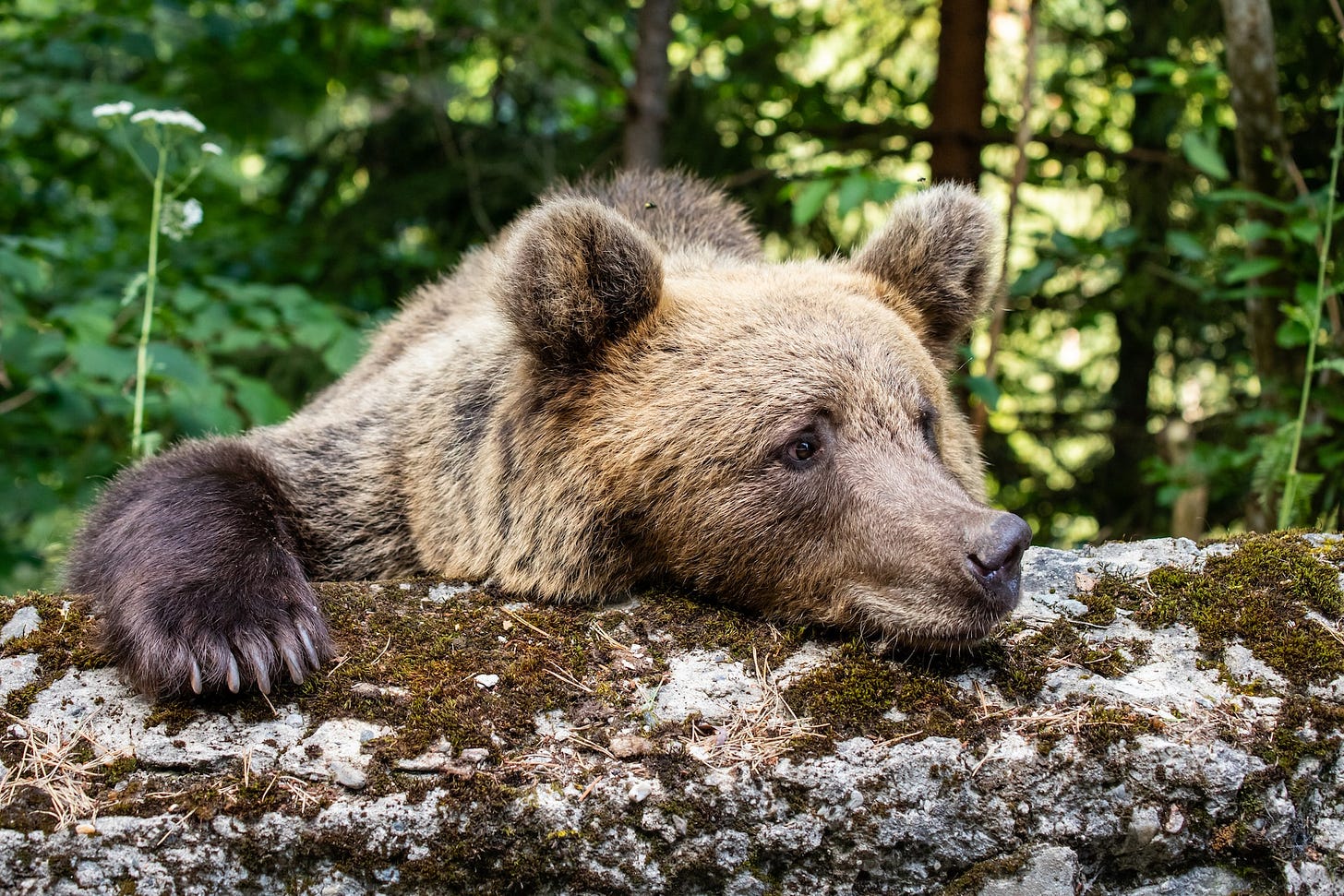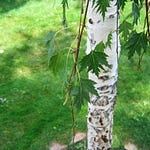Transcript
So we open today with some lines from Rumi:
Let yourself be silently drawn
by the stronger pull of what you really love.
A decade ago I entered a period of transformation. Live long enough, and a few such times of change will catch up with you—often after a big loss, a death or divorce. This time the change caught me unawares because it happened after a big joy.
My first book had just been published, and I was ecstatic. Even more than that, I was relieved. I could point now to who I really was. All those decades of being an editor, smoothing sentences and organizing pages and paragraphs for others, had provided ten thousand hours of practice. All those years of coaching grad students in writing papers and theses were the proving ground. And it was all leading up to this: I was a writer! At last the pattern made sense. Of course, fifty-five is a little late to find out who you really are, but better late than never, right?

Yet almost as soon as the book came out, I found myself feeling restless. Yes, giving readings was thrilling—finally getting to share the words that now appeared in a book. Feeling a special hush settle around a group like a warm comforter each time I read aloud from its pages.
But a hollow was forming inside me, just a little carved-out space, and it terrified me. It suggested I was looking for something else, something even deeper and more satisfying. I clapped back: No! I worked hard for this moment, and I intend to enjoy it!
But each time I headed out on yet another publicity trip, the thrill of what I was doing provoked a darker companion too, a shadow at my heels that had no name.
The yearning gnawed at me. It disrupted my life.
In hindsight, I can see that the transformation had been sneaking up on me for months, even years. Arriving at a mountaintop was just the excuse it needed to step up close, tap me on the shoulder, and say, “Now.”
The call sent me deeper into unknown territory than I had any interest in going. And in this case, it was spiritual territory.
Now it’s scary to enter unknown territory for any reason, but it’s especially scary when that territory takes you two places at once: deeper into yourself, and deeper into forbidden zones. And in this case, the Forbidden Zone was a place where the modern academic world says “Do Not Pass.” That place is the world of spirit, which to everyday thinking is the opposite of the material world. Because here in Western society, we draw a sharp line between things seen and things unseen, and on this side of the line is a solid and reassuring 3-D world that we can see and touch and share with others. And on the other side of the line is who knows what, and it’s off limits, at least if you want to be taken seriously in the so-called real world.
And friends, I wanted to be taken seriously. I still do, I’m afraid. I may have tamed that craving a bit by now, but at the time intellectual respectability was still high on my list of priorities.
You’d think I’d gotten over that already. After all, I’d just published a book about listening to trees and talking with birds and how connecting in these ways of the heart can open a person to being more human, more themselves in the world. Even more, how these ways of connecting are needed right now in our culture because they shrink us down to our real size—human beings as listeners, just one organism in the whole community of organisms, everyone speaking, everyone listening, everyone equal.
But no, I hadn’t gotten over it. I still wanted to be taken seriously by other reasonable people. So when I felt the call to go even deeper into this thing I’d just written about, I resisted. I mean, it’s one thing to talk about a connection beyond words as if it’s a beautiful but fairly rare thing—something ineffable and gorgeous and mostly out of reach—and it’s quite another to dive right into it, to engage in that kind of connection daily as a spiritual practice, and to live as if it’s actually real. Because that will send you straight into the Forbidden Zone. And I didn’t want to go there.
It wasn’t just the craving for respectability, to be honest. I was just plain scared. You know how when a call from those deeper places comes, it sounds so sweet, but it might demand things of you. It might ask you to change. And here I was, fresh arrived at a new mountaintop, and getting there had been such a tough slog that I was ready to stay put for a while. I didn’t want to glimpse another mountain beyond this one. I was tired of climbing.
Yet something inside was definitely not right. I was a writer now—in my own eyes—but I didn’t feel like writing. Matter of fact, I didn’t even feel like reading. No, it was worse than that: I couldn’t read. I felt so churned up inside that nothing could hold my attention. Every book I cracked felt irrelevant. Something else was pressing for my attention, was pressing down on me and pressing hard.
So I did what I had done so many times: I turned inside, with fear and trembling, to find out what was churning. It was the move that had helped me so often over the years—to heal from trauma and to make sense of daily life, to set my feet on a good path. But this time I engaged in the process not with a therapist but with someone from the Forbidden Zone. Pushed to my own limit, I slid right over that line and started talking directly with Spirit.
Now, I grew up from my littlest days being taught how to pray. But I have to confess, when I prayed as a young person, or when I watched the adults around me praying, I rarely experienced something happening. It was like all these prayers were being sent out to a huge and empty sky. Was anyone out there even listening? Was there anyone even to listen?
Which is a big reason I’d spent most of my adult years in the role of a skeptic—a thoughtful one, to be sure, a skeptic who enjoyed poetry and mystery and who liked to talk about magical things in nature, but careful most of the time to speak “as if”: as if the world might be more mysterious than we think. As if there might be more. In educated public discourse you just get taken more seriously if you use qualifiers and stay dubious. I had the skeptic’s privilege, and I liked it.
But my resolve had been chipped away. I was miserable inside, and I had no idea why. So I reached for something I wouldn’t have been comfortable with before.
I started talking with a bear. In spirit.
The process was simple: sit in a quiet spot where I wouldn’t be interrupted, pull out my phone with its voice recorder, prepare my mind and heart, and reach inside to see what images might appear.
The quiet spot and the phone were easy. But preparing the mind and heart took some doing. I had to get past all the voices inside that had decided that “this is stupid” and “you’re making it all up.” I had to try to get down to that quieter place inside, that more tender place, where the breath is easy and the mind is open and easy too. I was working with a human mentor in this process, and she would say, “Just set all that aside for a moment,” and I would try, but it was a whole lot easier said than done. I would take a deep breath. Focus again on this moment. On what was right before me: my own yearning to go deeper. To find out why I was so miserable. And, thank all the powers that be, misery is a good motivator. I would set the doubts aside, again. I would open to something more spacious and more supportive—or at least to the possibility of it.
And when I found that sense of possibility, I would reach toward it, in the dark and quiet behind my own eyes, to see what images might appear. With as much of an open mind and heart as I could muster, I would simply allow images to appear on that inner movie screen. And that’s when the magic started to happen.
. . .
Part of the deal the Western world makes in drawing a sharp line between things seen and unseen—between things that can and cannot be measured—is to exclude love and affection from our tools for understanding nature. Love and respect and empathy have no mass; they cannot be handled or plotted on a graph. So in Western ways of knowing, they are at best irrelevant and at worst distractions, even distortions, from what we imagine as pure knowing, the kind that is free from personal feeling.
It would be like trying to know our closest family members by leaving emotions out of the picture. By measuring our loved ones’ height and width or counting the number of times they eat per day or mapping how their eyes move when they interact with others of their kind. It’s absurd, of course. We would know nothing about the depth of our connection to them, the claims they make on our hearts, the passions they inspire in us, how bereft we would feel without their company. We would know about them, but we wouldn’t know them.
Which is all to say that in our personal relationships we inhabit both sides of that sharp line without even thinking about it. With our family members, whether animal or human, we continually engage through our mind and heart and imagination. With our beloveds, we imagine possible futures; we think about what they mean to us; we feel our love for them, and we tell them so. Philosopher and theologian Vine Deloria Jr. of the Standing Rock Sioux nation said, “The best things we experience and the best things we know are immaterial things. They are ideas. Or emotions.”
So we wouldn’t dream of trying to understand family and friends without letting love and empathy bloom between us. Yet this is how we relate to our more-than-human neighbors on Earth. We try to understand them by subtracting love and empathy, and any other feelings or values, from our learning about them. It’s a way, we think, to keep our knowledge of them free of distortion.
But it’s also a neat trick we perform to keep the power between “us” and “them” grasped firmly in our own hands. Because subtracting love and empathy in any relationship means relieving ourselves of the responsibility to relate to others as peers, as equals. We don’t have to acknowledge other creatures as whole beings, every bit as multidimensional in their own ways as we are in ours. We don’t have to be vulnerable with them or open our hearts to them. And above all, we don’t have to change.
When I began to talk in spirit with a bear, I had to do all of these things.
. . .
The first conversation alone changed me. As I sat there in the chilly darkness before dawn, wrapped in a blanket, holding my phone to record my halting words, I experienced something I’d never experienced before. I felt someone respond. As I put a hesitant question into words, an image would arise in my mind’s eye. As I described that image for the recorder, another image would follow. The image would provoke a thought in me, and when I spoke my thought aloud, a response would follow. These images and responses did not come from my conscious mind; they were not of my devising. They were spontaneous, the way a friend might talk with you or spar with you, respond to your questions, or suggest a new thought. I experienced someone on the other end of the line.
That someone was a bear. A good-natured bear. A spirit bear whose image I could clearly see in my mind’s eye. And this bear was chuckling at me for getting all tripped up over my own feet. But I couldn’t even be offended because if I looked at things in his way, they were kind of funny. And just seeing the humor helped my feet untangle a bit, helped my breathing ease.

Bear’s teasing humor was disconcerting. How could he be so jovial while I still felt so miserable? But his gentle good humor was irresistible too. Almost every day after that I went back for more.
And each day I was met by the same good-natured bear. The first time was not a fluke. Conversations continued to happen. Images arrived in my mind’s eye, surprising images, that gave me perspective on things I was dealing with in everyday life.
Over and over I was met by a bear who simply was there with loving and cheerful support, whose advice was only about “how to be,” never about “what to do,” and the “how” he suggested always nudged me toward becoming bigger in spirit. More spacious and open. Less fretful about things and more willing to be amused. More willing overall to meet life with ease.
More like water, surging free and strong.
More like a bear, ready to sniff the air and enjoy where it leads.
After only about two months of talking with Bear, my sweetheart, Tim, who by that time had known me for almost forty years and lived with me for nine of them, looked at me one day and said, “You seem happier.”
. . .
Many white people call this kind of meditation “going on a shamanic journey.” I don’t call it that, out of respect for my Indigenous friends for whom the word shamanic is a fraught word, a word of pain. To them it would suggest that I am trying to copy Native spiritual practices, which means, in fact, stealing. I want to be very clear: the meditative journeys I am describing are not patterned on any Native practice that I know of, and they are not intended to imitate any kind of Indigenous spirituality, not even any ancient practices of my own European ancestors.
Neither did I learn the practice from any Indigenous people. It was trees and birds who first ventured toward me out of the Forbidden Zone and showed me that this kind of talking in spirit is possible. And when my worldview had finally shifted enough to make room for such an idea, it was trees and birds who taught me that the sharp line that some humans draw between matter and spirit is just a construct. It’s only a line thought up by people who considered themselves superior to all other creatures on Earth and who wanted to dominate them.
Many other people arrange their cosmos differently. In most if not all Indigenous traditions, spirit and matter are inseparable, just different aspects of the same reality flowing together in every being and place and force of the natural world. Which means that all parts of nature inhabit both material and immaterial reality.
We’re all equal, all complex, all communicating, all harboring hidden dimensions to our being.
Indigenous writers often emphasize that trying to draw a sharp line between matter and spirit imposes an artificial construct on the natural world. Instead of simplifying the complexity, they say, it merely dumbs down our understanding. Vine Deloria said it in his typically blunt way:
Any damn fool can treat a living thing as if it were a machine and establish conditions under which it is required to perform certain functions—all that is required is a sufficient application of brute force. The result of brute force is slavery. . . . Reductionism is about the least efficient way to garner knowledge.
. . .
When I began to talk in spirit with a bear, I had recently learned to know myself as a writer. But talking with Bear, over weeks and then months, softened my attachment to that identity. I got hints of different kind of role, something less defined and more spacious. One day when I was puzzling—despairing really—about ever understanding it, Bear showed me an image of a wide and brightly lighted highway, the kind that makes for smooth travel. Like every highway, it had on-ramps leading to it. For me, he said, writing was like an on-ramp. It was an access road, not the path itself. What was the highway then?, I wanted to know. He fell silent.
Ten years later I still don’t have a name for the bright highway. But it really doesn’t matter anymore. I take this as a good sign—that I’m less preoccupied now with “what to be” and more ready to just “be.” In the past ten years the road has led in directions I never imagined, including many changes I didn’t welcome at the time. Hard changes, letting-go changes. I found myself following Rumi’s advice to be “drawn by the stronger pull of what you really love.” It coincided deeply with the demeanor of a spirit bear who always encouraged slipping with more ease into one’s own true nature. The path has taken all of me, but with less striving—a lot less effort and a lot more joy.
Some other lines from Rumi go like this:
You’re in your body like a plant is solid in the ground,
yet you’re wind. You’re the diver’s clothes
lying empty on the beach. You’re the fish.
Leaving an empty set of clothes behind—it’s a good way to live in a world of change and transformation. A world where the mysteries of other creatures stretch toward us and the mysteries inside confound us every day. When wings are sprouting or skin is thickening into scales and fins, the old clothes just won’t fit anymore.
Wishing each of us the courage to slip out of those old skins. To allow ourselves, and other creatures, to be more than we imagined. To slip into new ways of being, and new ways of seeing.
Related episodes
4. Listening to Nature, or how I learned that trees can talk
https://priscillastuckey.substack.com/p/4-listening-to-nature-668#details
23. Going on a Spirit Journey
https://priscillastuckey.substack.com/p/23-going-on-a-spirit-journey-1a6#details
6. Finding the Way of the Heart
https://priscillastuckey.substack.com/p/6-finding-the-way-of-the-heart-25c#details
For digging deeper
My second book, Tamed by a Bear: Coming Home to Nature-Spirit-Self (Berkeley: Counterpoint Press, 2017), tells the story of that first year and how the process began to change me. This interview by Ann Hostetler tells more about how I came to speak in spirit with a bear: “Finding Our Place in Nature,” CMW Journal 9, no. 4 (2017). I also wrote about it in a blog post, “When Your Still Small Voice Has a Name."
The Rumi epigraph at the start comes from the poem “An Empty Garlic,” trans. Coleman Barks, The Essential Rumi (San Francisco: HarperSanFrancisco, 1995), 51. The Rumi lines at the end are from “The Diver’s Clothes Lying Empty,” on the same page.
In religious studies terms, the meditative journeys I am describing are similar (phenomenologically) to the process that Jung used to explore his subconscious and compile his Red Book, a process that he called “active imagination.” They are also similar to the tradition of spiritual dialogues going back to medieval Christian mystics such as Teresa of Ávila and going back centuries before that to Jewish writers of Psalms and lamentations; for more on spiritual dialogues see my post “When Your Still Small Voice Has a Name.” Another close cousin phenomenologically is the use of the imagination in prayer as outlined by the great medieval Sufi philosopher, poet, and mystic Ibn ‘Arabī. See Henry Corbin, Alone with the Alone: Creative Imagination in the Sufism of Ibn ‘Arabī (Princeton: Princeton University Press, 1989) and this blog post by Golgonooza, “Creative Imagination and Mystical Experience in the Sufism of Ibn ‘Arabī, by Henry Corbin,” at The HumanDivine. And one final parallel is the internal experience, or trip, that happens after ingesting psychoactive substances such as psilocybin (magic mushrooms) or ayahuasca. I hope to write more about each of these parallels in the future.
Many white people have been introduced to meditative journeys through the work of Michael Harner, his Foundation for Shamanic Studies, and the students of his who became teachers of Core Shamanism. Harner took part in ayahuasca ceremonies led by Ecuadorian shamans, and these experiences reportedly influenced the method of shamanic journeying that he taught. The woman who coached me in learning to talk with Bear was influenced by Core Shamanism, but the method as she taught it was already several steps removed from Harner.
Vine Deloria’s words about the best things in life being immaterial come from a 1997 interview called “Vine Deloria Jr. on Our Relationship to the Unseen,” by the Sacred Land Film Project. His comments on mechanism and reductionism come from Spirit & Reason: The Vine Deloria, Jr., Reader, edited by Barbara Deloria, Kristen Foehner, and Sam Scinta (Golden, CO: Fulcrum Publishing, 1999), 13.

















Share this post